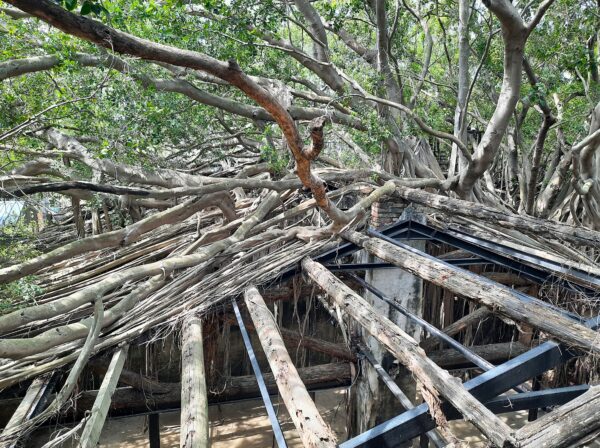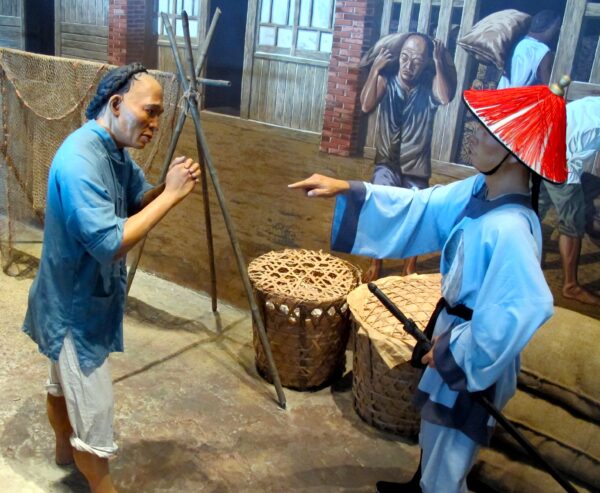Tainan
Tainan is to Taiwan what Kyoto is to Japan, a city essential for anyone those curious about Taiwan’s past, and alluring to all who adore characterful yet laidback places awash in tradition. Between the mid-17th century and late 19th century, Tainan was Taiwan’s political capital, commercial centre, and largest settlement. The urban core now has around 600,000 inhabitants (the population of the entire municipality was 1.86 million as of early 2024) and so many Buddhist and Taoist places of worship that locals like to say: ‘Tainan has a small shrine every three steps, and a major temple every five steps’.

A few thousand Han Chinese were living alongside the region’s indigenous Austronesians when the Dutch East India Company (VOC) established a trading colony here in 1624. Over the next 38 years, the VOC oversaw tremendous increases in rice and sugar production, both of which they exported to Japan and the Chinese mainland. To achieve this, the Dutch introduced water buffalo, shipped in farm tools, and encouraged landless peasants in China’s Fujian province to migrate across the Taiwan Strait. Those pioneers are the ancestors of many 21st-century Taiwan citizens.
The Dutch were evicted in 1662 by Koxinga, a supporter of the old Ming Dynasty who’d retreated to Taiwan after the collapse of his campaign against the new Qing Dynasty. Koxinga’s lasting contribution to Taiwan was the introduction of classical Han Chinese civilisation, epitomised by Tainan Confucius Temple.
Modern Tainan rewards slow travellers. There are hundreds of lanes and narrow alleyways where the past seems to live and breathe. Around each corner the curious will find something rewarding, be it a 19th-century merchant house turned into a restaurant, a semi-Baroque abode constructed during Japan’s 1895-1945 rule of Taiwan, or a vendor selling some of Tainan’s renowned street food.
The old Dutch colony
Tainan’s most photogenic relics are clustered in two neighbourhoods. The first is Anping, where the VOC and then Koxinga established their headquarters. The remnants of Fort Zeelandia, the older of Tainan’s two Dutch fortresses, stand in the heart of old Anping, but visitors should alot an hour or so for the adjacent streets. In places, the alleys are so confined that wandering tourists risk grazed elbows. But if they
The other concentration of antiquities can be found near what is now National Museum Of Taiwan Literature, a colonial-era landmark which used to be the city hall. This part of Tainan is easy to reach and tour, even for those coming here on a day-trip from Kaohsiung. In addition to Tainan Confucius Temple and the adjacent martial arts dojo — an utterly Japanese building right next to a thoroughly Chinese landmark — there are more than a dozen important shrines, most of which were founded over 300 years ago.
But there’s much more to Tainan than incense, prayers, and divination. As well as several good hotels, there’s a 1932 department store which was reopened (after a thorough renovation) in 2014 after decades of closure. Standing in a 200-year-old classical Chinese garden, one finds the Tainan Meeting Hall, a French-influenced structure built in 1911 at the behest of the Japanese colonial authorities. Its smooth lines and soft colours contrast abruptly but beautifully with the fantastically ornate roofs and dazzling decoration seen in the Great Queen of Heaven Temple, the Altar of Heaven, and scores more houses of worship.
Some of Taiwan’s finest museums…

Chimei Museum on the southern outskirts is home to a very different collection, one that appeals to lovers of classical Western music and art. Based on the acquisitions and eclectic interests of a local acrylics/consumer electronics tycoon, Chimei contains stuffed animals and birds and mediaeval armour and weapons, as well as oil paintings and sculptures. The collection of violins, violas, and cellos is said to be among the world’s best. The oldest playable cello in the world, dating from 1566, is here.
Located just 800 m (half a mile) as the bird flies from Chimei Museum, Ten Drum Culture Village is an old sugar refinery that’s been repurposed as a cultural venue. Lauded for their engrossing performances which feature flutes, gongs, and martial-arts moves as well as thunderous drumming, the Grammy-nominated Ten Drum Art Percussion Group performs hear each weekend.
…and even a national park
Travellers with their own vehicle or those who’ve arranged a private guided tour of Taiwan can go beyond Anping and explore Tainan’s coastal districts. Areas once devoted to fish farming or the production of salt are now ecologically protected zones within Taijiang National Park, a true paradise for birdwatchers!
